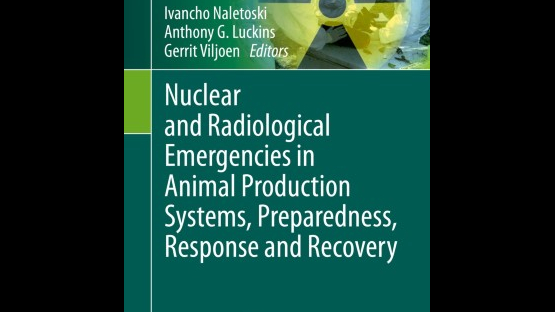
If you would like to learn more about the IAEA’s work, sign up for our weekly updates containing our most important news, multimedia and more.
Nuclear and Radiological Emergencies in Animal Production Systems, Preparedness, Response and Recovery
About the editors
Dr Ivancho NALETOSKI (PhD) is a staff member of the Animal Production and Health Section of the Joint FAO/IAEA Centre at the Headquarters of the International Atomic Energy Agency in Vienna, Austria since 2010. He is part of the team focusing on the development, validation and dissemination of diagnostic techniques for detection and characterization of transboundary animal and zoonotic diseases, application of stable isotope techniques for tracing long range migrations of migratory waterfowl and preparedness and response to nuclear and radiological emergencies in animal production systems. An important component of these activities is support in the integration of diagnostic technologies under ISO17025 standards in Member State veterinary laboratories and the dissemination of advanced molecular and immunological technologies to the veterinary laboratories of Member States. In addition, he is driving the application of real time geo-visualization tools and satellite remote sensing platforms for visualization of laboratory results, and integrating them, into the epidemiological strategies of the veterinary authorities in Member States.
Dr Gerrit Viljoen (DSc) is head of the Animal Production and Health Subprogramme of the Joint FAO/IAEA Centre situated in Vienna, Austria since 2003. The Joint FAO/IAEA Centre is unique in that it is the only International Organization that has its own R&D Laboratories. At any given time the Subprogramme is responsible for about 60 national country projects (on a two year cycle) and 8 Co-ordinated Research projects (on a five year cycle) mostly in developing IAEA and FAO Member States. The main aims of the programmatic activities are in the development and transfer of appropriate technologies, training of targeted Member State animal production and health counterparts, the development/establishment of research capabilities and in the evaluation, validation and harmonization of procedures to improve animal production systems.
Dr LUCKINS Antony (PhD) worked for over 30 years at the Centre for Tropical Veterinarary Medicine, Edinburgh, dealing primarily with the pathogenic animal trypanosomiases that cause major livestock and zoonotic diseases in countries in Africa, Asia and South America. He was responsible for development, evaluation and or validation of nuclear and nuclear-related methods for improved diagnosis and surveillance together with studies on the pathology and pathogenesis of disease and its effects on reproductive functions. His work involved teaching students to higher degree level, training of scientists and development and management of research projects in institutes in developing countries. He has contributed to a number of Joint FAO/IAEA Centre co-ordinated research programmes on immunoassay technologies and worked with the Janimal Production and Health Section in the creation of projects designed to determine the potential of gamma irradiation of transboundary animal disease pathogens to develop attenuated vaccines and the use of stable isotopes in understanding the the epidemiology and ecology of highly pathogenic avian influenza.

